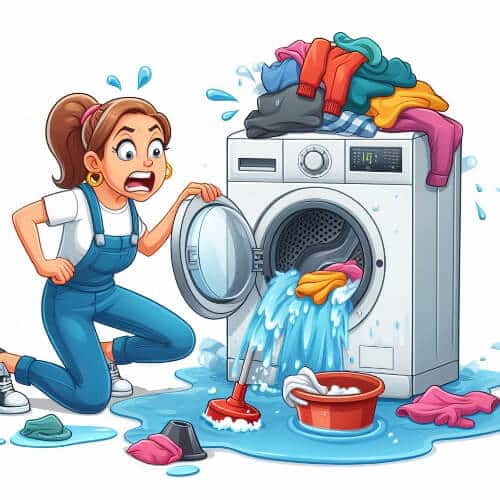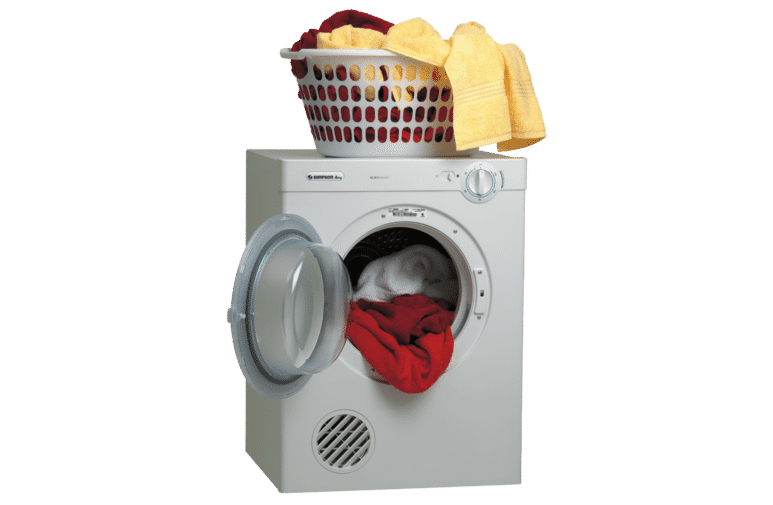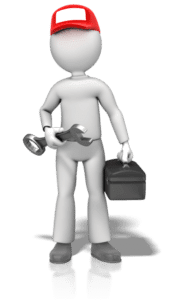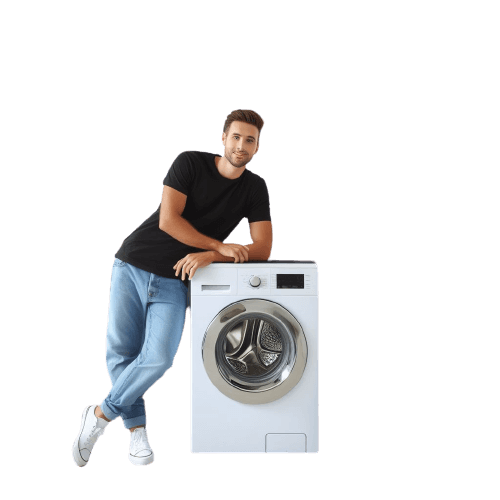Blog
Dealing with a clogged washer can be inconvenient. It may lead to a washer that doesn’t drain properly and prevents your laundry from getting cleaned. This can result in water pooling in the tub, unpleasant odors, and potential damage to the machine. Fortunately, you can take several simple steps to clear clogs and ensure proper drainage in your washer.
Usually, a blockage happens when tiny bits clog up the filter in the dirty water drain. Other reasons for drain problems can be:

Small objects getting into the filter can cause blockages in the washing machine. These tiny things end up in the drain hole with the dirty water, clogging the drain mechanism and messing up the machine’s usual operation.
Technicians often find various objects in the filter, such as:
If you don’t clean the filter regularly, even one small object can cause problems over time. It builds up and can eventually completely block the drain, stopping the washing machine from getting rid of dirty water.
Besides foreign objects causing blockages, the filter can also get clogged from the regular buildup of lint, feathers, fur, and hair. This kind of blockage happens gradually over a longer period compared to the ones caused by small objects. To prevent this, it’s essential to clear out the accumulated debris from the filter.



While it’s always recommended to consult a professional for complex issues, there are some DIY steps you can take to attempt unclogging your washer. Here’s a guide to help you address a clogged washer:
Turn off the Washer: Before starting any troubleshooting or cleaning, ensure that the washer is completely turned off and unplugged to prevent any accidents or injuries.
Check the Drain Hose: Start by inspecting the drain hose for any kinks, twists, or blockages. Straighten the hose if necessary and remove any visible debris or lint. Ensure that the hose is securely connected to both the washer and the drain outlet.
Clear the Filter: Many washing machines have a filter located near the bottom front panel. Consult the user manual to locate the filter and remove it. Clean the filter by rinsing it under running water to remove any trapped debris. Once clean, reinstall the filter.
Vinegar and Baking Soda: Create a solution by mixing equal parts of vinegar and baking soda. Pour the mixture into the detergent dispenser or directly into the drum. Run a hot water cycle to allow the solution to work through the drain system, helping to dissolve any residue or buildup.
Run a Cleaning Cycle: Some washing machines have a self-cleaning or maintenance cycle. If available, run this cycle as it uses high temperatures and specific cleaning agents to break down and remove any clogs or buildup in the washer.
Check Other Components: Inspect other components like the pump or drain hose for any obstructions or damage. If you notice any issues, it’s best to contact a professional for further assistance.
Keeping your washer in good shape is key for easy laundry. One common issue is a clogged washer, causing cleaning and drainage problems.
To make your washing machine run smoothly:
Check pockets for small items before washing.
Use mesh bags to prevent foreign items from getting into the drain.
Fasten zippers and buttons.
Don’t wait until your washer needs emergency help. Regularly clean the filter and drain hose


Although people have been washing their clothes for about two hundred years it is only at 1691, the first English patent in the category of washing machines was approved.
As early as 1904, newspapers advertised and debated mechanical washing machines. The invention of the electric washer has been mistakenly attributed to Alva J. Fisher. But US Patent Office shows at least one patent issued before Fisher’s US patent number . The “inventor” of the electric washing machine remains unknown.
If your washer breaks contacting a professional appliance repair service like ARNI Services is important if you have any problems with your washer. We have the experience, expertise, and tools necessary to diagnose and fix the problem quickly and efficiently. Call Us at ARNI Services Appliance Repair we will find the issue and will fix your broken washer.

If your are concerned with your appliances performance, don’t hesitate to contact our professionals at ARNI Services, Appliance Repair for a full diagnose and repair service.
If your are concerned with your appliances performance, don’t hesitate to contact our professionals at ARNI Services – Appliance Repair for a full diagnose and repair service – you can’t put a price tag on peace of mind.